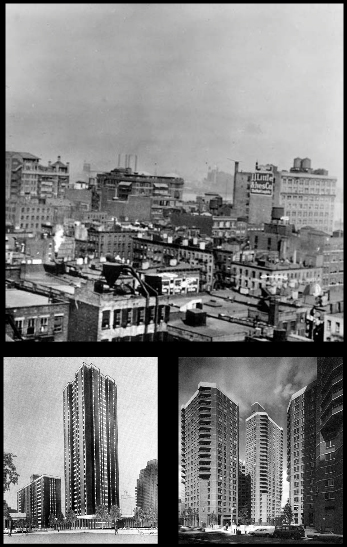

apartments to real slum areas." The New York Times pointed out that even if the urban renewal plan did not go forward, the area was already undergoing change as two high-rent apartments were recently constructed on the site of former tenements by private real estate developers. Mayor Robert Wagner argued that an urban renewal scheme providing improved housing for low- and middle-income residents was "much better than abandoning this neighborhood to private real estate speculators." Much of the new housing was constructed as part of the New York State sponsored Mitchell-Lama program that encouraged the construction of middle-income apartments by private developers.
Work on the Bellevue South Urban Renewal Project began in 1968 with construction of Phipps Plaza South, a complex of two apartment buildings on Second Avenue between 25th and 26th Streets. The complex was sponsored by Phipps Houses, a nonprofit foundation established in 1900 to build model tenements for the poor and working class. Phipps Houses constructed its first building in 1906 on 31st Street. The building was demolished in 1955 to make way for Kips Bay Plaza. The foundation sponsored four housing complexes within the Bellevue South Renewal Project. These included the largest complex in the area, the 1,600-unit Phipps Plaza West, a group of eight high-rise towers constructed on a superblock between 26th and 29th Streets. When completed in 1976, the design of Phipps Plaza West was praised for limiting the number of apartments on each floor and for providing much needed open space.